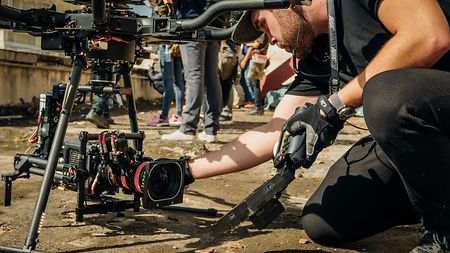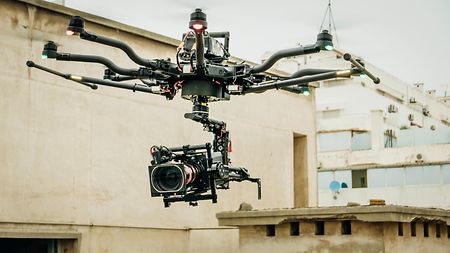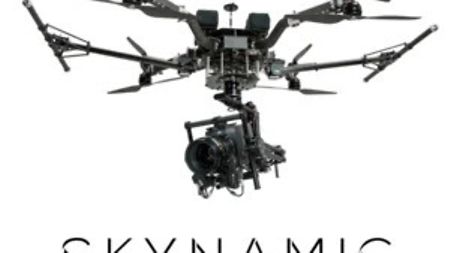Since founding their company Skynamic in 2012, Julian Gloeckner and Gabriel Manz have filmed around the world in all environments: from the big city to the mountain range, jungle, and sea. Recently, these two German drone camera operators spent four months with their team working in Morocco. From Casablanca to Ouarzazate and into the Sahara desert, they captured spectacular aerial shots for a Chinese action film with an ALEXA Mini attached to an octocopter. “Dust everywhere, huge differences in temperature between daytime and nighttime, lots of smoke. The conditions were really difficult,” Julian Gloeckner recalls, before adding: “But we never had any problems with the camera: ALEXA Mini can handle it all.”
The eight-motor drone, rechargeable batteries, camera body, lens, and gimbal: Up to 18 kg (40 lbs.) had to be maneuvered steadily through the air-down narrow alleys and amid flocks of birds, past low-hanging power lines and in the most varied of wind conditions. “All a question of concentration,” says Gloeckner. That is why Skynamic always works in twos on set. A pilot flies the drone, while a camera operator controls the gimbal and concentrates on the shot. The images result from well-practiced communication between the two. Depending on the setup, a drone can stay in flight for between six and 15 minutes. The batteries are still the bottleneck preventing longer flights.

Skynamic: "ALEXA Mini can handle it all"
The drone pilots from Skynamic are specialists in aerial shots with the ALEXA Mini, and they appreciate the opportunity to keep ARRI´s camera system on the cutting edge with software updates.


